|
|

|
|
Author
|
Topic: ISS Archeological Project SQuARE 'dig sites'
|
Robert Pearlman
Editor Posts: 52869
From: Houston, TX
Registered: Nov 1999
|
 posted 01-21-2022 04:35 PM
posted 01-21-2022 04:35 PM
   
collectSPACE Astronauts turn archeologists to document space station 'dig sites' In a recent scene familiar to many, even those not well-versed in the discipline, a researcher marked off square areas in order to catalog the layers of contents buried within. These "test pits," which were similar to the squares made at the sites of ancient cities and bygone civilizations, were based on a basic technique practiced by archeologists. Only this time, the researcher was an astronaut and the "dig sites" were on board the International Space Station (ISS). 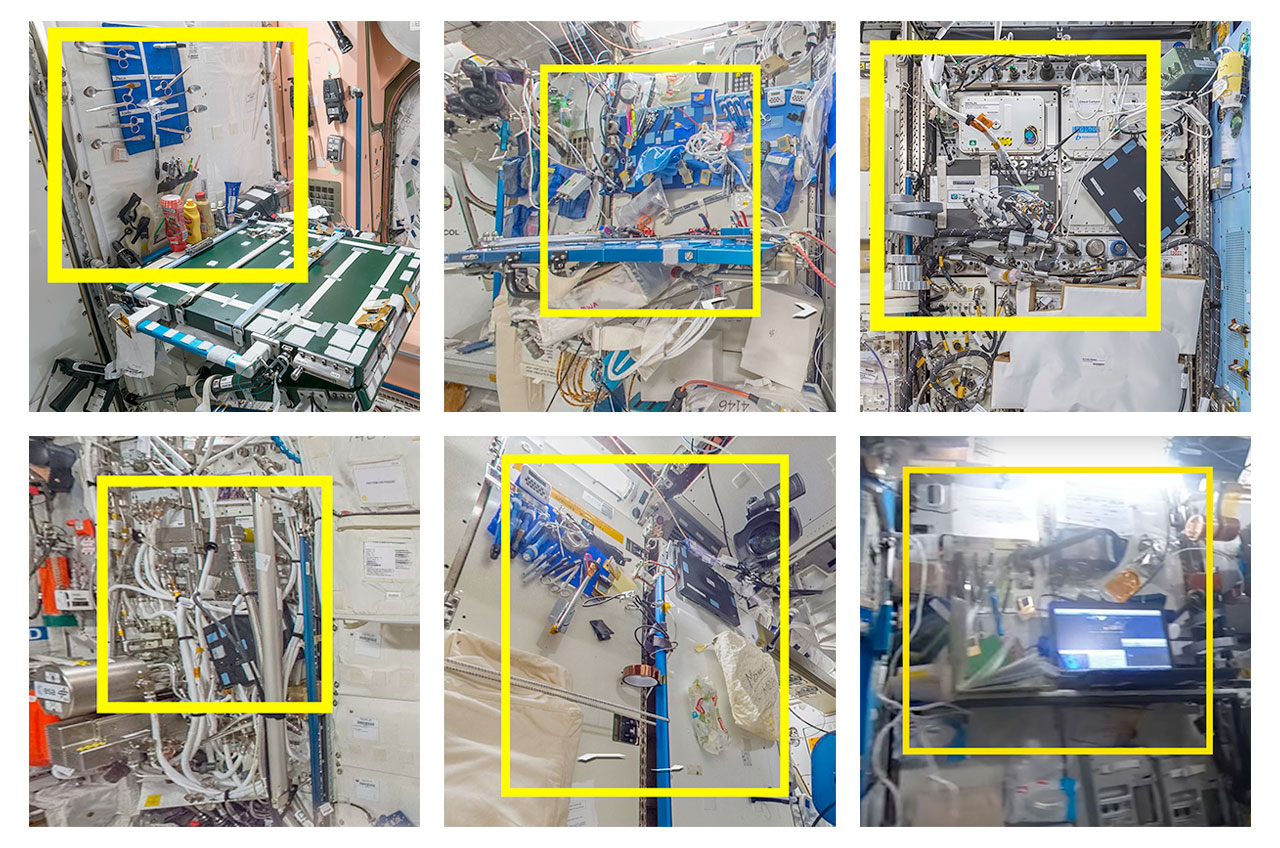 |
Robert Pearlman
Editor Posts: 52869
From: Houston, TX
Registered: Nov 1999
|
 posted 02-04-2022 05:21 PM
posted 02-04-2022 05:21 PM
   
NASA photo release ESA (European Space Agency) astronaut and Expedition 66 Flight Engineer Matthias Maurer poses with a ruler and color chart abaord the International Space Station's Unity module. To his rear, are NASA Flight Engineers Mark Vande Hei and Kayla Barron. The ruler and chart are used for the SQuARES study looking at how crew members use different objects and spaces over time. This investigation may provide information that helps improve the design of future space craft and habitats. 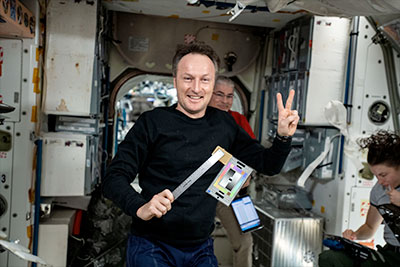 Roscosmos cosmonaut and Expedition 66 Commander Anton Shkaplerov poses with a ruler and color chart aboard the International Space Station's Unity module. 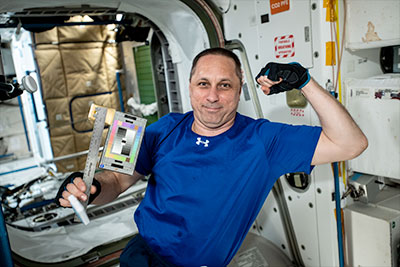 Roscosmos cosmonaut and Expedition 66 Flight Engineer Pyotr Dubrov poses with a ruler and color chart while working inside the Nauka multipurpose laboratory module.  NASA astronaut and Expedition 66 Flight Engineer Thomas Marshburn poses with a ruler and color chart aboard the International Space Station. 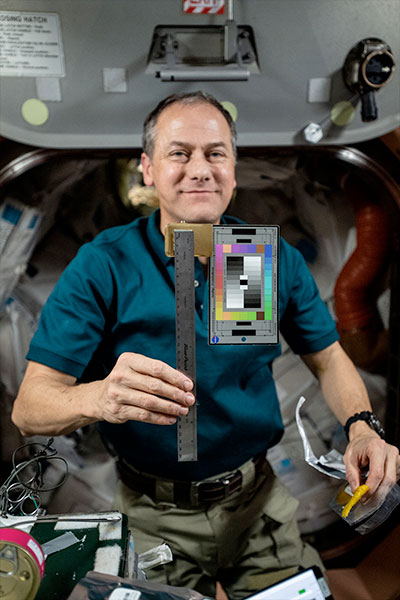 NASA astronaut and Expedition 66 Flight Engineer Mark Vande Hei poses with a ruler and color chart aboard the International Space Station. 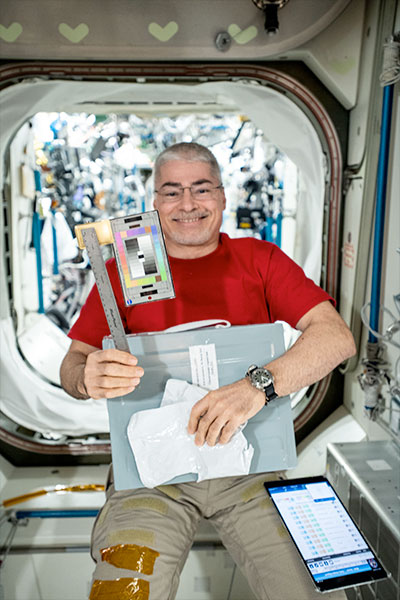 |
Robert Pearlman
Editor Posts: 52869
From: Houston, TX
Registered: Nov 1999
|
 posted 02-20-2024 09:09 AM
posted 02-20-2024 09:09 AM
   
From ISS Archeology (via X): We are pleased to announce that the first publication of results from the first archaeological work done in space, the Sampling Quadrangle Assemblages Research Experiment (SQuARE) on the ISS, is now available as a pre-print.In this work, we examine two of the six sample locations — a workstation in Node 2 and a blank wall in Node 3 — documented by the crew with daily photography from January to March 2022. We analyze the function of each area and chronological trends. Key conclusions are that the workstation was rarely used for its intended purpose, if ever, and that it was instead an area for contingent storage; and that the blank wall took on associations with body maintenance (cleaning oneself) because existing facilities are inadequate. In the process, we have validated a technique for using photography as direct archaeolgical evidence, which we hope can be used by others who study remote or dangerous sites. We've also shown how the social sciences can contribute important discoveries to improve life in space. 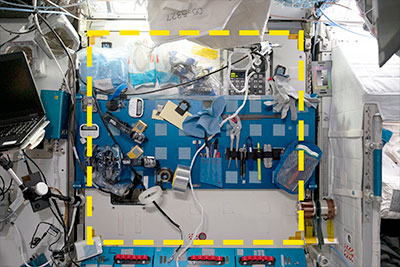 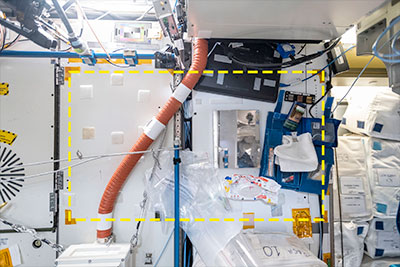
|
Robert Pearlman
Editor Posts: 52869
From: Houston, TX
Registered: Nov 1999
|
 posted 08-07-2024 06:28 PM
posted 08-07-2024 06:28 PM
   
From Justin Walsh, co-principal investigator for the International Space Station Archeological Project (via Facebook): The day is finally here: results from the first archaeology ever to happen in space were published today in PLOS ONE! We made some unexpected discoveries about how astronauts actually use two locations in the International Space Station. Check out this story in Gizmodo to find out more about what we learned. Abstract for "Archaeology in space: The Sampling Quadrangle Assemblages Research Experiment (SQuARE) on the International Space Station." Report 1: Squares 03 and 05: Between January and March 2022, crew aboard the International Space Station (ISS) performed the first archaeological fieldwork in space, the Sampling Quadrangle Assemblages Research Experiment (SQuARE). The experiment aimed to: (1) develop a new understanding of how humans adapt to life in an environmental context for which we are not evolutionarily adapted, using evidence from the observation of material culture; (2) identify disjunctions between planned and actual usage of facilities on a space station; (3) develop and test techniques that enable archaeological research at a distance; and (4) demonstrate the relevance of social science methods and perspectives for improving life in space. In this article, we describe our methodology, which involves a creative re-imagining of a long-standing sampling practice for the characterization of a site, the shovel test pit. The ISS crew marked out six sample locations ("squares") around the ISS and documented them through daily photography over a 60-day period. Here we present the results from two of the six squares: an equipment maintenance area, and an area near exercise equipment and the latrine. Using the photographs and an innovative webtool, we identified 5,438 instances of items, labeling them by type and function. We then performed chronological analyses to determine how the documented areas were actually used. Our results show differences between intended and actual use, with storage the most common function of the maintenance area, and personal hygiene activities most common in an undesignated area near locations for exercise and waste. | |
Contact Us | The Source for Space History & Artifacts
Copyright 1999-2024 collectSPACE. All rights reserved.

Ultimate Bulletin Board 5.47a
|
|

|
 advertisement advertisement

|



















